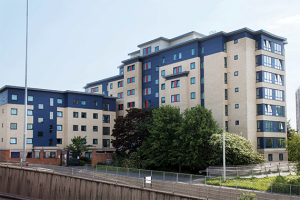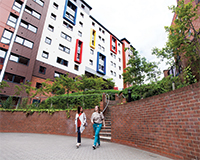
It was inevitable that the private rented sector would develop at different speeds and in different ways across different regions – and nowhere, arguably, is a greater challenge than the North East.
For although there is interest, notably in Newcastle, the critical indicator most institutions want to see is absent. The HomeLet index shows a monthly drop of 2.1% in the region’s residential rents in August – the UK’s biggest drop. Land Registry house price data for the north east region shows a 0.4 per cent annual rise to September to a modest £100,943.
EJ Harris and Hometrack’s joint assessment of PRS regional markets – measuring land values, delivery costs and rental demand – describes the North East as the country’s least viable region. “The assessment is two years old but the principle still holds good – it’s very challenging in that region,” says EJ Harris’s Mark Farmer.
“One reason for the PRS viability challenge is that houses here are cheap,” explains Ray Minto, director of land and development at Bilfinger GVA in Newcastle. “Not every renter simply goes out and buys, but with low prices and interest rates, plus schemes like Help To Buy, there isn’t the guaranteed critical mass of tenants you see in some regions.”
Richard Shield of Savills’ Darlington office says for much of the region the PRS model doesn’t stack up, although Newcastle (“which didn’t ever have the over-supply of city centre stock that Leeds and Manchester had” says Shield) presents a possible – if small – market.
In addition, Newcastle council is keen to shift empty stock, some in the form of units over retail ground floors, and this does not always merge with PRS investors’ aspirations.
Yet all of this is not to say there is no PRS on the horizon – far from it.
Over the summer, Newcastle council gave consent to Panacea Property Developments’ three-block, 280-unit scheme on a brownfield site bounded by Forth Banks and Pottery Bank. It is easily the most advanced of any PRS scheme in the region.
Godwin Developments – already developing a PRS site further south, in Nottingham – says it is in the early stages of negotiation for at least one Newcastle site, while the capital markets and private equity specialist PRS Capital has recently pledged to build 3,000 PRS units across the North East by the end of 2020, although with no specifics yet identified.
Other potential PRS sites include Gateshead Quayside, plus the Science Central, Stephenson Quarter, East Pilgrim Street and Forth Banks in Newcastle. There may be some scope at South Tyneside’s £100m city centre regeneration scheme and, in Durham, Milburngate House, the former passport office site recently acquired by Carillion.
The problem is that, to date, there are no firm occupiers and operators ready to commit.
That is an irony, given that this region arguably has more experience than most in the management of bulk rental units.
One example is Arch Homes, Northumberland’s largest private residential landlord and part of the Northumberland Development Company, an arm’s-length mixed-use development body wholly owned by the county council.
Its housing inventory is partly inherited from the public sector, but bolstered by some of its own purpose-built rental stock – a PRS of a kind, although lacking the institutional funds traditionally associated with the sector. Ultimately, Arch wants to build 200 shared-ownership units a year.
With the UK’s movement from public to private residential investment still in full swing, hybrid schemes reliant on council control are innovative, but perhaps unlikely to be a blueprint others will adopt.
So the region’s pursuit of “true” PRS continues: for the moment at least, the jury is out as to whether it will take root in the North East anytime soon.

The Student Scene
If it’s wait and see for PRS in the region, student accommodation schemes have by contrast been motoring – so much so that Newcastle, in particular, may be near saturation.
The city has 50,000 students at two universities, so the temptation has been to pile in, especially as purpose-built accommodation was limited until recently.
But now there is a pipeline of 6,200 beds at some stage of planning or construction, according to Savills. Part of that is a site at Claremont Place, purchased for £11m by Savills itself for Empiric Student Property, which plans 88 premium bed spaces for students.
One of the biggest players is Unite Students, which already has 984 beds in Newcastle; its two largest blocks are Manor Bank and Camden Court.
“We’re developing in a central location for approximately 600 students,” explains Unite’s property managing director Richard Simpson.
The most recent scheme from any developer, opened in mid-September in time for the autumn term, has been St James’ Point II. This is the 204-room second phase of an £18m investment in Newcastle student accommodation by the Cross Lane Group.
Now, some feel the market is closing. Not only have many units been delivered, but the city council is lobbying government for business rates to be applied to student accommodation: it argues that if the same number of units had been built for the mainstream owner-occupation or rental markets, the authority would have benefited from council tax income.
“Our advice to future developers is to be very stringent on choosing a location. Be as close to campus as possible and be aware of the current supply versus student number growth,” cautions Lizzie Whetman of Savills’ student investment team.











